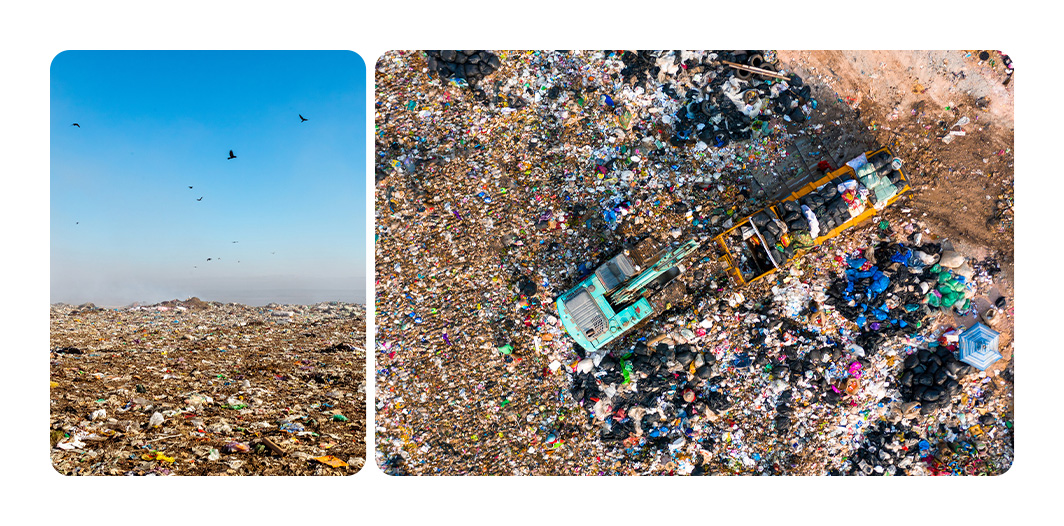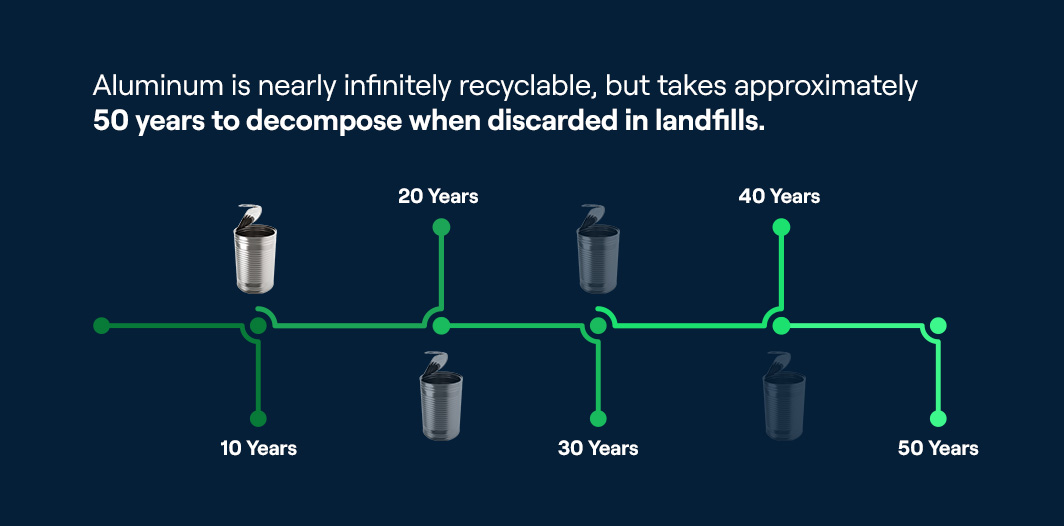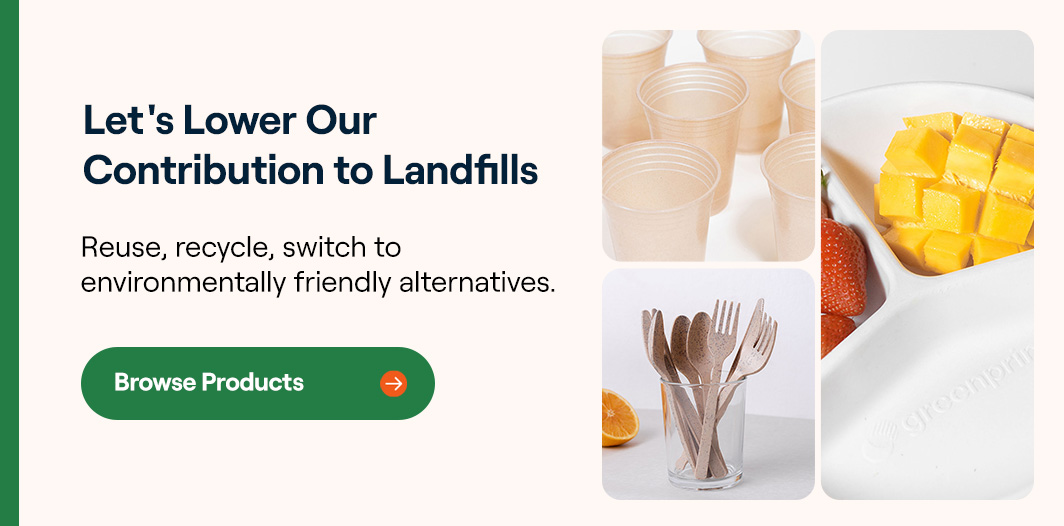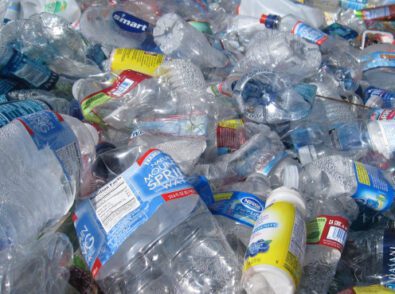Longest-Lasting Items in Landfills

As society becomes increasingly aware of the impact of human activities on our environment, we must make conscious and informed decisions about our consumption patterns. With this in mind, examining what we use and waste can help guide future behavior.
One way to do this is by looking at the materials that remain the longest in our landfills. Today, we’ll analyze the top longest-lasting items taking up space in landfills across America today. We’ll also explore ways to reduce their presence and encourage responsible disposal practices.
Let’s Talk About Landfills
Landfills are a vital part of modern waste management. While sustainable practices such as sorting, recycling, and reusing our trash are becoming increasingly critical for protecting the environment, they aren’t always feasible. Because of this, landfills provide a safe way to contain potentially hazardous materials and isolate them from the surrounding air, water, and wildlife.
There are approximately 1,300 municipal solid waste landfills in the U.S. Even though the number is lower than in 2009, America is still one of the world’s top municipal waste generators.
Pros and Cons of Landfills
Landfills are convenient locations to contain non-recyclable waste in a specific area and maintain sanitation in communities. Landfills release fewer emissions when compared to other disposal methods, like incineration.
Unfortunately, landfills are fertile ground for bacterial growth if not contained. They can pollute surrounding water and soil, encouraging some species to flourish at others’ detriment. Air quality near landfills is also poor and can be hazardous to humans and wildlife. The unwelcome sights, sounds, and smells of landfills make life unpleasant for nearby residents and reduce the land’s purpose.
Overfull landfills may require clearing arable land and forests to create more room. Hazardous items like batteries, paint, and automotive oil indefinitely contaminate the soil and surroundings, irreparably endangering human and animal life. Some communities reclaim and cap full landfills to form a barrier between the trash and the land around them. Many find new lives as parks, while some have become home to solar arrays or other energy-producing projects.
Top 10 Longest-Lasting Items in Landfills Today
Garbage decomposition timelines for different products depend on their material and environmental factors surrounding the landfill. Organic materials may break down in a few months, while single-use plastics could take hundreds of years. Here are the top 10 items that last the longest in landfills today.
1. Plastic Bottles
Despite their convenience, the proliferation of plastic bottles presents some significant environmental challenges. It takes about 450 years for a plastic bottle to decompose. Though many are recyclable, less than 9% end up in recycling facilities.
2. Plastic Bags
Plastic bags take even longer than harder plastics to break down—up to 500 years. Many countries have outlawed plastic bags and have regulated manufacturing to stem the tide.
3. Glass Bottles
Glass is non-biodegradable and takes up to 1 million years to decompose in landfills. However, glass is a substance that can break down and remanufacture infinitely into new products. Therefore, there’s no reason glass bottles should end up in landfills.
4. Disposable Diapers
Non-biodegradable disposable diapers will take 450 years to break down in a landfill, during which time they leach various toxic chemicals into the soil.
5. Paper Cups
Most disposable paper cups have a plastic lining to prevent leakage and may take up to 20 years to break down in a landfill. With a push toward more sustainable alternatives, some coffee shops have implemented an in-house recycling system for their paper cups, use compostable cups made of bamboo or cornstarch, or give discounts to customers who bring reusable cups from home.
6. Plastic Film
Plastic film takes 30 years or more to decompose and is not easily recyclable. It is up to the consumer, manufacturers, and shippers to reduce plastic packaging or switch to more sustainable options.
7. Shoes
Rubber-soled shoes take between 50 to 80 years to break down in a landfill, though evidence suggests that some brands may take 1,000 years to decompose.
8. Clothing
Discarded clothing may remain in landfills for decades, depending on the material. Natural fabrics like cotton could break down after a few months, whereas synthetic fabrics take up to 200 years to decompose. To keep clothes out of landfills, consider donating, upcycling, or looking for local stores that accept used clothing for resale.
9. Aluminum Cans

Aluminum is nearly infinitely recyclable, but takes approximately 50 years to decompose when discarded in landfills. As an alternative, choose fresh food products when possible.
10. Food Scraps
Food waste accounts for 22% of municipal waste in the U.S. We discard more food than any other country, even as the number of people experiencing food insecurity grows. Food waste, which includes everything from meat and fish to fruit and vegetables, can take anywhere between one month and a year to decompose. However, food decomposition can take longer in a landfill while releasing greenhouse gases into the atmosphere.
Reducing the amount of food we throw away is the first line of defense, but consumers can also compost food waste at home or through municipal curbside composting programs.
Items Not Allowed in Landfills
Each state has different rules about what they will and will not allow in landfills. Generally, disallowed items do significant environmental damage:
- Automotive and household batteries
- Tires
- Motor oil
- Paint
- Biohazardous medical waste
- Yard waste
- Computers and other electronics
- Anything containing mercury or cadmium
- Computers
- TV screens and monitors
- Solar panels
Landfills in some states also ban aluminum cans, corrugated cardboard, newspaper, and many other recyclables. The strategy is to encourage people to recycle these items correctly instead of throwing them into landfills, where they continue creating waste and pollution. Other items and products are off-limits because they are hazardous. Check with your municipality to learn about landfill regulations in your area.
Be Part of the Solution
Even minor changes can make a significant difference if you’re trying to live more sustainably.
- Avoid purchasing items with excessive or unsustainable packaging.
- Take reusable bags to the grocery store.
- Bring reusable takeaway containers to use at restaurants.
- Use reusable water bottles and cups.
- Recycle when possible.
- Reuse, donate, or upcycle clothing you no longer wear.
- Look for items with brief shelf lives that degrade quickly in landfills.
- Start a compost bin at home or compost what you can in your curbside program.
- Use renewable resources whenever possible.
Frequently Asked Questions
Explore how you can make more informed choices to reduce your footprint on the planet with these commonly asked questions about landfill items.
What Takes the Longest to Decompose?
The items that take the longest to decompose are glass bottles, electronic waste, and plastic bags. Glass bottles and some electronic waste can take over 1 million years to break down. While glass may break down into shards, it is non-biodegradable and cannot change back into a natural element.
Some electronic waste, like computer monitors and batteries, takes less time to decompose, but most municipal solid waste landfills still disallow them because they contain hazardous materials that can contaminate soil and water.
How Long Does Plastic Take to Decompose?
Of all the municipal solid waste generated, more than 12% consists of plastic products like durable goods, containers, and packaging. Some plastic items like bags and bottles take hundreds of years to decompose, while Styrofoam, which consists of polystyrene, never decomposes. Resistant plastics, such as PET, need UV light to break down into smaller particles that remain in the environment.
What Are the Most Commonly Thrown Away Items?
Paper and paperboard products make up most items people throw away. Fortunately, these materials are also the most recycled.
Let’s Lower Our Contribution to Landfills
We can all do our part to protect our precious environment by learning about sustainability issues and how our actions contribute to municipal solid waste landfills. Reuse, recycle, switch to environmentally friendly alternatives, and support sustainable businesses.

References
- https://www.statista.com/statistics/193813/number-of-municipal-solid-waste-landfills-in-the-us-since-1990/
- https://www.epa.gov/landfills/municipal-solid-waste-landfills
- https://www.statista.com/statistics/916749/global-generation-of-municipal-solid-waste-by-country/
- https://www.pollutionsolutions-online.com/news/waste-management/21/breaking-news/what-are-the-pros-and-cons-of-landfill/55723
- https://www.mdpi.com/2073-4433/15/4/410#
- https://blogs.oregonstate.edu/dive4ag/2021/04/05/limiting-waste/
- https://www.epa.gov/facts-and-figures-about-materials-waste-and-recycling/plastics-material-specific-data#:~:text=While%20overall%20the%20amount%20of,plastic%20containers%20is%20more%20significant.
- https://www.statista.com/chart/14120/the-countries-banning-plastic-bags/
- https://www.ncsl.org/environment-and-natural-resources/state-plastic-bag-legislation
- https://www.gpi.org/glass-recycling-facts
- https://www.unsustainablemagazine.com/the-effects-of-disposable-diapers-on-the-environment-and-human-health/
- https://insights.basf.com/home/article/read/anatomy-of-a-cup#
- https://pubs.acs.org/doi/10.1021/acssuschemeng.9b06635
- https://www.theguardian.com/fashion/2020/mar/21/some-soles-last-1000-years-in-landfill-the-truth-about-the-sneaker-mountain
- https://news.climate.columbia.edu/2021/06/10/why-fashion-needs-to-be-more-sustainable/
- https://www.aluminum.org/Recycling
- https://www.sciencefocus.com/planet-earth/top-10-what-are-the-longest-lasting-landfill-items
- https://www.rts.com/resources/guides/food-waste-america/
- https://www.researchgate.net/publication/331640444_Fast_decomposition_of_food_waste_to_produce_mature_and_stable_compost
- https://www.epa.gov/facts-and-figures-about-materials-waste-and-recycling/national-overview-facts-and-figures-materials





